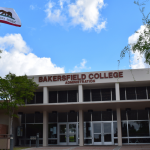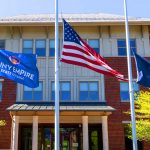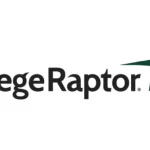As community colleges emerge from the COVID pandemic new challenges around enrollment and retention are emerging. Community college leaders are now tasked with overcoming these challenges and guiding their institutions toward financial stability.
Ocelot recently sat down with Dr. James Catanzaro, a community college president for nearly four decades, to hear his perspectives on how community colleges can navigate the current challenges. Read part 1 and part 2 of this interview here.
****
Ocelot: You saw a lot of change in higher education over the course of your 38 years as a community college president. How did you stay close to changing student interests and needs?
Dr. Catanzaro: In my last eight or nine years I did something that turned out to be of great significance. Every Friday morning, our Institutional Effectiveness VP and I held a focus group in the form of an off-campus breakfast with eight students. One of them was always the same; the president of the student body. That person selected the other seven from across curriculum and demographics. We sought to find out how our students looked at the world, how they experienced the college, and what challenges they were facing. we got their feedback on changes we were planning before execution. We got many Fresh ideas from them, some that we could act on immediately, others of strategic value.
Then we asked them to rank order their “lives” in order of importance. As it turned out, we discovered many things about our students including this: commonly, students identified two separate lives related to their college experience — going to class and preparing for class. When we asked them to rank order their full list of “lives,” most often they had in the top three going to class, but very often near the bottom was preparing for class. Some students even told us how angry they were that faculty were “messing around” with their social life, their family life, their work life, by giving them “a tsunami” of assignments. That gave us some real insight into how we needed to provide for our students not just a robust orientation to the college as semesters began, but continuous orientation about learning with the target of helping them select courses and pathways to completion that had high likelihood of success and succeed in each course along the way.
Ocelot: This makes a ton of sense. You found a terrific way to keep a pulse on student needs, which is so critical. There are macro issues – such as the Great Recession, which led many young people to delay starting families, and we are seeing folks being much more cautious about how much money they are willing to spend or borrow to pay for college – which impact students. For a community college, which is open access, how do you feel institutions should be thinking about these macro issues, including the cost piece?
Dr. Catanzaro: Well, I’m going to speak beyond being a college president and just say, hopefully, nationally, we’ll get to the point where we’ve largely been in Tennessee for several years, making college financially accessible to all prospective students. We know, however, that even if tuition is zero, many students will struggle with the costs of transportation, housing, food security, books. We also know that “free” subliminally suggests to many “of less quality”. It’s a challenge to make all this work for the significant variety of students we seek to educate.
Ocelot: What advice do you have for folks who are working in the trenches about taking chances now? And presidents, for that matter, taking chances on new ways of doing things, given the situation?
Dr. Catanzaro: Well, you know, there have always been two external constraints to bold leadership – college Boards of Trustees and college faculty. A number of presidents fortunately have professional Boards that are focused on advancing the college mission and serving as persuasive advocates. There are Boards that carefully consider initiatives and say, if merited, “Go for it! We’ll back you up.” Then, I’ve had Boards say, “No, let’s not risk faculty, staff, student, political opposition. Good idea, but let’s just pack it in here.”
There have been many occasions when faculty leaders have stepped up and moved the institution forward, but also times when they’ve said, whatever the likely outcome, we have to stand fast. Of course, much of this knee-jerk opposition to innovation is because faculty are over-committed and professionally limited. Let me just say here that I believe community college faculty should not be teaching five classes a term with 35, 40, 50 students in each section. They should be teaching no more than four classes with class sizes that fit the subject, level of student preparation and pedagogical style. Also, contrary to popular community college faculty belief, TAs (graduate students from area universities) could really lighten the load for them allowing faculty to have much greater impact on student persistence and completion rates and, more important, competence levels.
Ocelot: Managing your Board – that’s a whole separate subject, but it’s real. If you have their support, if folks are just willing and, all in the same boat, right, you’re all heading in the same direction and there’s a unified, “Hey, you know, succeed or failure, we know what we’re trying to accomplish and make a huge difference.”
Dr. Catanzaro: We’ve got to move past behaving as if we’re part of an education bureaucracy even if we are. Such conduct is stifling! In a bureaucracy, everything must be accounted for and that can destroy innovation. A colleague called me one day and told me this story: he had some community leaders over for an early morning meeting. His assistant ordered half a dozen donuts. As it turned out, only three of his invitees showed up. So, as it turned out, there were two donuts not eaten. “Okay,” said the president, “I’ll give one to my assistant and one to our regular custodian.” Sounds like a good solution to me. However, according to the internal auditor, giving away those two donuts created a morale issue. The other custodians didn’t get one; the other assistants didn’t get one. Extreme, yes, but always, over each leader’s shoulder, is the threat of audit and, more immediately, attacks by internal critics. Clearly, we’ve got to get past such nonsense. Presidents want to be entrepreneurial leaders, believe me, they want to lead in transformative ways. Well, let’s take on the risk and do it!
Ocelot: Maybe some of the bureaucracy is realizing, “The whole institution is at risk if we don’t think differently. Okay, let me really prioritize what’s most important here.”
Dr. Catanzaro: Yes, exactly. That’s where we are today.
About Dr. James Catanzaro
Dr. James Catanzaro is a long-standing leader in higher education having served as president of four community colleges in four states for nearly four decades including as president of Chattanooga State Community College for nearly a quarter century.
During those years and for a decade before, Jim taught at least one course per semester – for many years, on-ground, then also online, even hybrid.
Since retiring six years ago, he has served as Executive Director of the Higher Education Research and Development Institute, South, known by the acronym HERDI, South, and as a consultant to several firms in the higher education marketplace. In these roles, Jim regularly speaks with scores of community college leaders about the challenges facing community colleges today.















